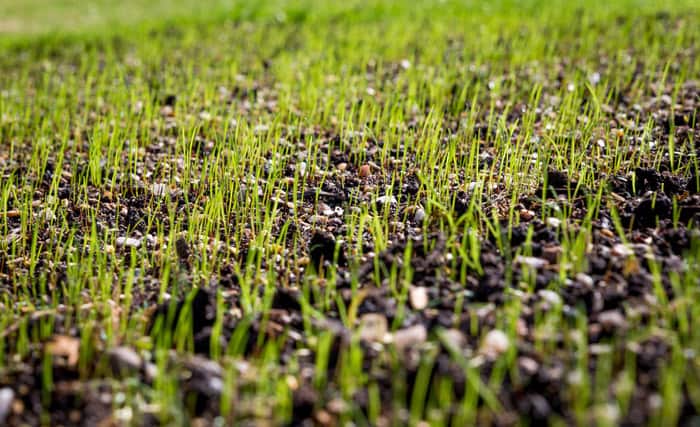
How to Plant Grass Seed in the Summer
The birds are chirping, the sun is shining, and summer is finally here. For those who want a green and healthy lawn, this also marks a great time to begin planting grass seed. Although the exact timing depends on a variety of factors, including your local climate and the exact type of grass you’re trying to grow, the summer months are generally a great time for planting grass seed.
Warm-Season Grass
Generally meant for the hotter climates of the southern United States, warm-season grasses are much better at withstanding extreme heat than their cool-season counterparts. Warm-season grasses tend to go dormant during the winter months, turning brown in color, but they’ll likely regain their color as the weather begins to warm up again.
Popular warm-season grasses include:
- Bermuda
- Zoysia
- St. Augustine
- Bahia
- Centipede
- Buffalo
These grass varieties tend to thrive when planted in late spring or early summer. Ideally, you’ll want the average daytime temperature to stay around 80 degrees Fahrenheit before you begin planting any of the warm-season grasses.
Cool-Season Grass
Since warm-season grasses are more common in the southern U.S., it’s no surprise that cool-season grasses are prevalent in the northern regions. Unlike their counterparts,cool-season grasses thrive in northern climates during the spring and fall months.
Popular cool-season grasses include:
- Kentucky bluegrass
- Fine or Tall fescue
- Perennial or annual ryegrass
The cool-season grasses mentioned above should be planted during the later summer months. Cool-season grasses can also be planted in early fall, if needed. Since these grasses thrive in temperatures ranging between 60 and 75 degrees Fahrenheit, there’s a lot more flexibility when planting cool-season grass as opposed to warm-season grass.
Transitional Zone Grasses
Homeowners who live between the northern and southern regions of the United States are in an area known as the Transition Zone. Although both warm- and cool-season grasses can grow and thrive in the Transition Zone, most experts recommend one of the follow types:
- Warm-season grasses: Those who prefer the look of warm-season grasses generally choose between Bermuda or Zoysia grass.
- Cool-season grasses: Kentucky bluegrass, perennial ryegrass, and tall fescue are all great options in the Transition Zone.
Of course, it’s ultimately up to you which kind of grass seed you want to plant. It’s not impossible to grow another type of grass in the Transition Zone, and it’s even possible to grow warm-season grass in the north and cool-season grass in the south. Going against these norms, however, will make it more difficult to cultivate a green and healthy lawn.
Tips for Planting Grass Seed in the Summer
In some cases, grass can be planted simply by throwing seeds haphazardly on the ground. However, this is never ideal. Not only do you risk the chance of an uneven or patchy lawn, but the seed itself might be washed away as a result of regular watering or extreme weather before it ever gets a chance to take root. As such, it’s recommended that you follow a few helpful tips when planting grass seed in the summer.
- Check your soil’s pH level before planting, as this will help you narrow down your options when it comes to different grass and fertilizer types.
- Aerate and loosen your soil before spreading grass seed, as this will help protect your new seed from extreme weather, animals, and pests.
- Bare spots and patches can be seeded by hand, but you’ll want to use a seed spreader when seeding a larger area.
- Create a strict watering schedule and stick to it – especially within the first few weeks of planting your new seed.
- While you want to avoid mixing warm- and cool-season grasses within the same lawn, you can use a combination of two or more grasses that fall within the same season for a unique look.
Use these tips and techniques the next time you spread grass seed around your lawn to increase the likelihood of cultivating a healthy, lush lawn that will withstand the test of time.
Finding the Right Grass Seed for Your Lawn
Laying down grass may seem easy, but it takes knowledge, patience, and skill to cultivate a healthy, beautiful lawn that will stand the test of time. Not only will the right grass seed increase your home’s curb appeal, a healthy lawn can even help avoid infestations from local insects, rodents, and other nuisance pests. That being said, once you start your gardening journey its not uncommon to need a hand from the best lawn care professionals. By reaching out to us at lawncare.net, you’ll find the top Pros in the business ready to lend a hand- and they’ll be sure to have your yard looking like the greenest on the block in no time at all!
